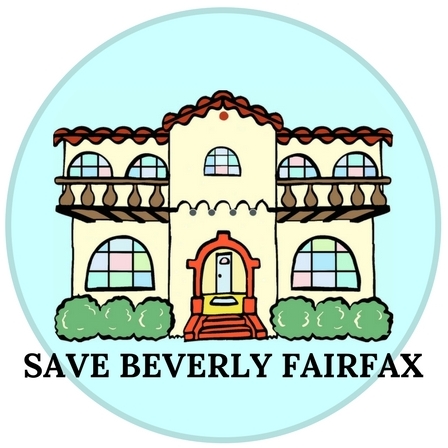What is historic preservation?
Historic Preservation is an endeavour that seeks to preserve, conserve and protect buildings, objects, landscapes or other artifacts of historical significance.
What makes the beverly fairfax district historic?
The Beverly Fairfax Historic District (Originally referred to as "The Orange Grove-Gardner Historic District) has been identified by SurveyLA as a historic district. The survey, which was commissioned by the City Of Los Angeles and performed by Architectural Resources Group, found that our district "is an excellent example of a 1920s to 1940s Period Revival neighborhood with multi-family residences in various Period Revival styles; it is also significant as an early Jewish enclave, representing the earliest movement of the Jewish community westward from areas like Boyle Heights in the late 1920s and early 1930s. Residences within the district retain their original plans, massing, scale and character-defining features, predominantly of the Spanish Colonial Revival, Mediterranean Revival, Tudor Revival, French Revival and Minimal Traditional styles. The district’s period of significance for its excellent concentration of Period Revival-style residences and multi-family property types is 1925 to 1949, which captures its major period of development and the time during which most of its buildings were constructed. Its period of significance for its association with the Jewish community begins in 1925, when the first residences were constructed in the district; it remains a vibrant Jewish enclave.”
What are the benefits of historic preservation?
- Local districts protect the investments of owners and residents of historic properties. Insensitive or poorly planned development can make an area less attractive to investors and homebuyers, and thus undermine property value. In contrast, historic district designation encourages people to buy and rehabilitate properties because they know their investment is protected over time.
- Properties within local historic districts appreciate at rates greater than the local market overall as well as faster than similar, non-designated neighborhoods. Findings on this point are consistent across the country. Moreover, recent analysis shows that historic districts are also less vulnerable to market volatility from interest rate fluctuations and economic downturns.
- Local districts encourage better quality design. In this case, better design equals a greater sense of cohesiveness, more innovative use of materials, and greater public appeal―all of which are shown to occur more often within designated districts than non-designated ones.
- Local districts help the environment. Historic districts encourage communities to retain and use their existing resources in established neighborhoods. This reduces the need for cars, cuts back on pollution and congestion, and eliminates landfill waste.
- Local districts are energy-efficient. Many older buildings were designed with energy conservation in mind, taking advantage of natural light, cross-ventilation, and climate-appropriate materials. Preservation commissions are also increasingly improving their design guidelines to make it easier for historic building owners to use renewable-energy technologies.
- Historic districts are a vehicle for education. They are a tangible link to the past and a way to bring meaning to history and to people’s lives. They preserve the original character of buildings and streets, while welcoming growth and innovation within those spaces. They are a living, active record of communities and their residents.
- Historic districts can positively impact the local economy through tourism. An aesthetically cohesive and well-promoted district can be a community’s most important attraction.
- Protecting local historic districts can enhance business recruitment potential. Vibrant commercial cores and charming neighborhoods with character attract new business and quality industry.
- Local districts provide social and psychological benefits. People living in historic districts enjoy the comfort of a human-scale environment (a mix of aesthetics and functionality that fit the average person’s dimensions and capabilities); the opportunity to live and work in attractive surroundings; a recognizable and walkable neighborhood; and the galvanizing effect of community-based group action.
- Local districts give communities a voice in their future. By participating in the designation process, citizens can help direct their communities’ path. Making these decisions together in a structured way―rather than behind closed doors or without public comment―gives everyone involved a sense of empowerment and confidence.
